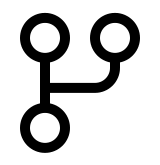Introduction to Fabric Data Pipelines
Data Ingestion and Semantic Models with Microsoft Fabric

Alex Kuntz
Head of Cloud Curriculum, DataCamp
Data Pipelines in Microsoft Fabric
Two Primary High-Level Features in Data Factory:
- Data Pipelines - Orchestrates data movement.

- Dataflows - supports UI-based 300 + Data transformations.

Data Pipelines in Microsoft Fabric:
- Automates ETL process with minimal or no code.
- Supports seamless integration of diverse data sources
- Rich set of activities for data ingestion and transformation
- Run pipelines manually or schedule them with triggers
1 https://learn.microsoft.com/en-us/fabric/data-factory/data-factory-overview
Activities in Data Pipelines
Activities are tasks within Pipelines, orchestrating data processing and workflow automation.

1 https://learn.microsoft.com/en-us/fabric/data-factory/activity-overview
Types of Activities
- Move & Transform:
- Handles data transfer and transformation tasks
- (e.g., Copy data
 ).
).
- Metadata & Validation:
- Manages data quality checks and metadata retrieval.
- (e.g., Lookup
 ).
).
- Control Flow:
- Controls task sequence based on conditions and loops.
- (e.g., If condition
 , ForEach
, ForEach  ).
).
1 https://learn.microsoft.com/en-us/fabric/data-factory/activity-overview
Types of Activities
Orchestrate:
- Synchronize multiple processes
- (e.g., Invoke Pipeline
 ).
).
Notifications:
- Sends alerts and updates through email or messaging tools
- (e.g., 365 Outlook
 , Teams
, Teams ).
).
Transform:
- Execute data manipulations as per the business logic.
- (e.g., Notebook
 , Stored Procedure
, Stored Procedure ).
).
Pipeline Parameters and Variables
Parameters and Variables help control and manage pipeline behavior dynamically.
Parameters:
- Set at Runtime: Adjust pipeline behavior using external inputs.
- Global Scope: Influence the entire pipeline execution.
Variables:
- Dynamic Tracking: Change values during pipeline execution.
- Local Scope: Manage data within specific pipeline activities.
1 https://learn.microsoft.com/en-us/fabric/data-factory/parameters 2 https://learn.microsoft.com/en-us/fabric/data-factory/set-variable-activity
Pipeline runs
A pipeline run executes the activities in your pipeline to completion.
- On-Demand: Start pipelines directly from the Fabric UI.

- Scheduled: Starts the run at a specific frequency.

Monitoring:
- Track and review each pipeline run using its unique Run ID in the Monitor Tab.
Validation:
- Ensure your pipeline configuration is correct by using the Validate option before execution.
1 https://learn.microsoft.com/en-us/fabric/data-factory/pipeline-runs
Let's practice!
Data Ingestion and Semantic Models with Microsoft Fabric

